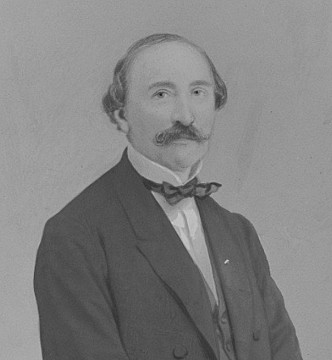David Stewart (1810-1891)
of New York City; President of the American Coal Company
He was born in New York City but after his father died in 1814 he was brought up by his mother and maternal grandfather (David Tod) at Jamaica on Long Island. He was a nephew of Judge George Tod and a first cousin of David Tod, Governor of Ohio and U.S. Minister to Brazil. He started his career as a clerk in a dry goods firm before partnering with Thomas Paton, establishing their own firm, Paton & Stewart. Over a period of twenty years they made a fortune importing Irish and Scottish linen, during which time he lived at 10 University Place. After retiring, Stewart sat on the boards of various financial institutions and became more closely involved with banking, coal and iron. He was one of the original stockholders in both the Brier Hill Iron & Coal Company and the Cleveland & Mahoning Railroad, and at the time of his death he was the President of the American Coal Company whose headquarters were at 1 Broadway. He was a member of the Knickerbocker Club and a Trustee of Grace Church. By the time he died (while vacationing at the Hotel Champlain in Plattsburgh, New York) he was living at 322 Fifth Avenue and left a fortune (excluding real estate) of $3.5 million. He was married twice and was survived by his second wife (Mary Hicks) and his daughter from his first marriage, the Patron of the Arts, Isabella Stewart Gardner, of Brookline, Massachusetts.




